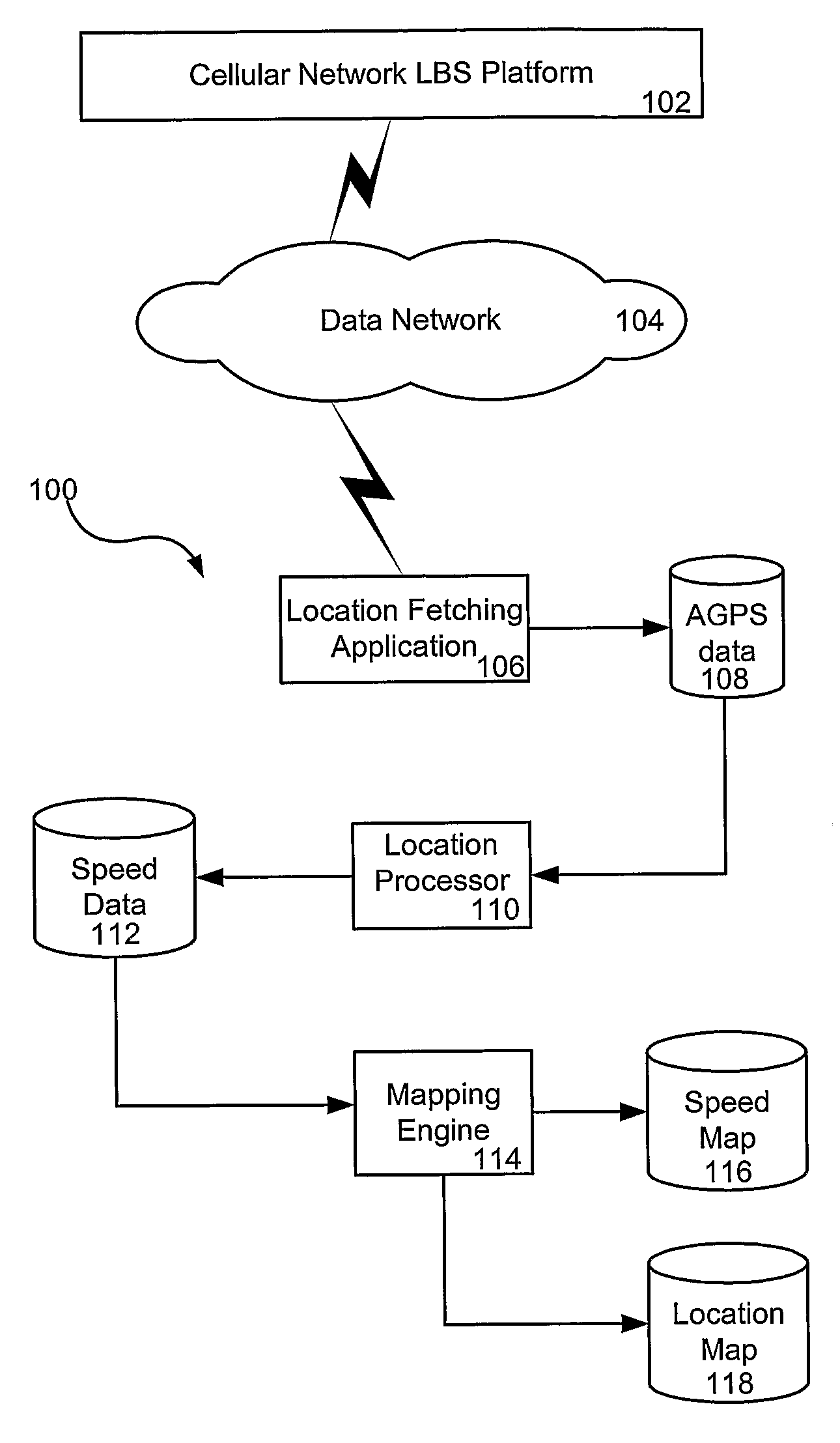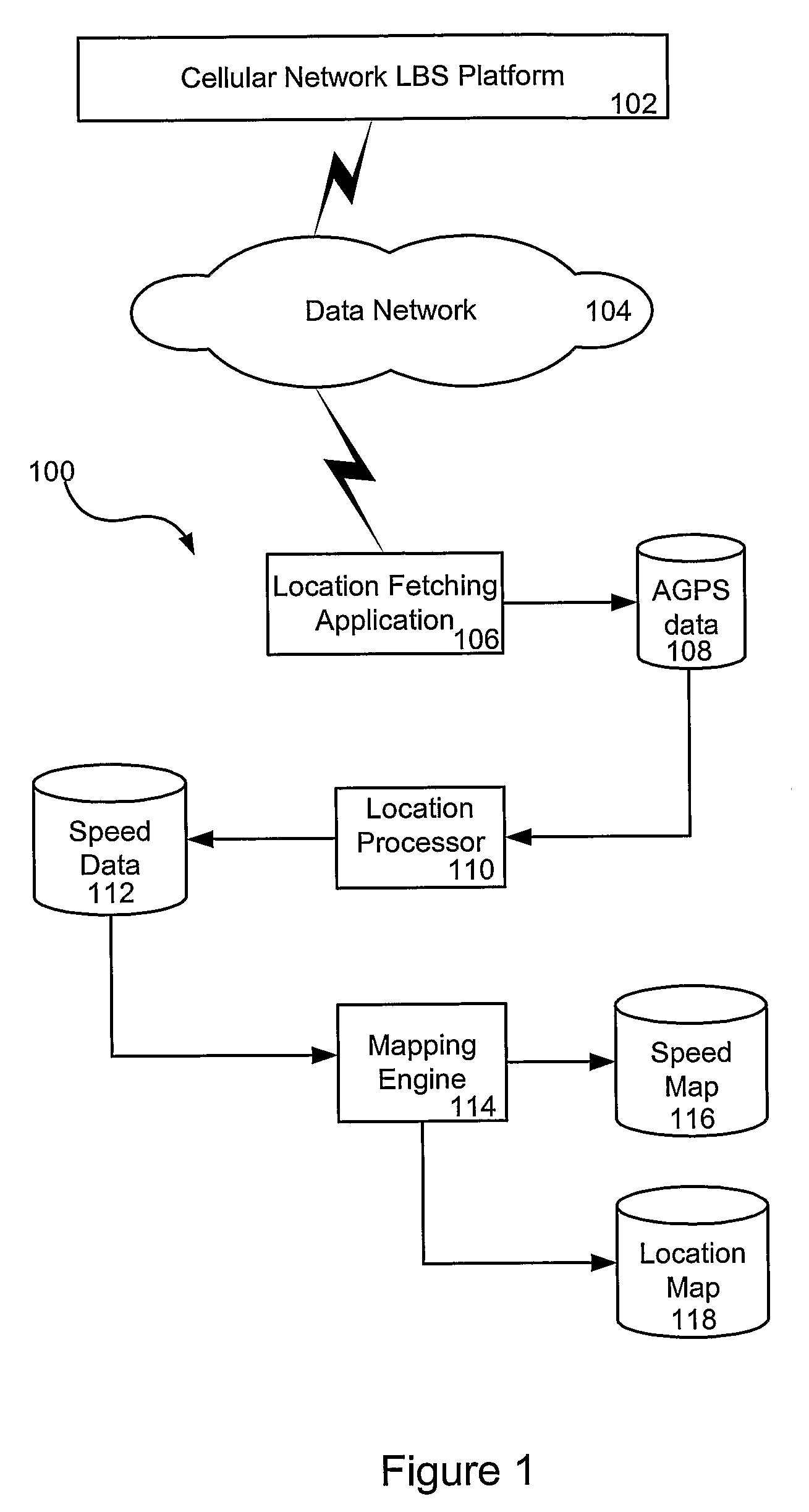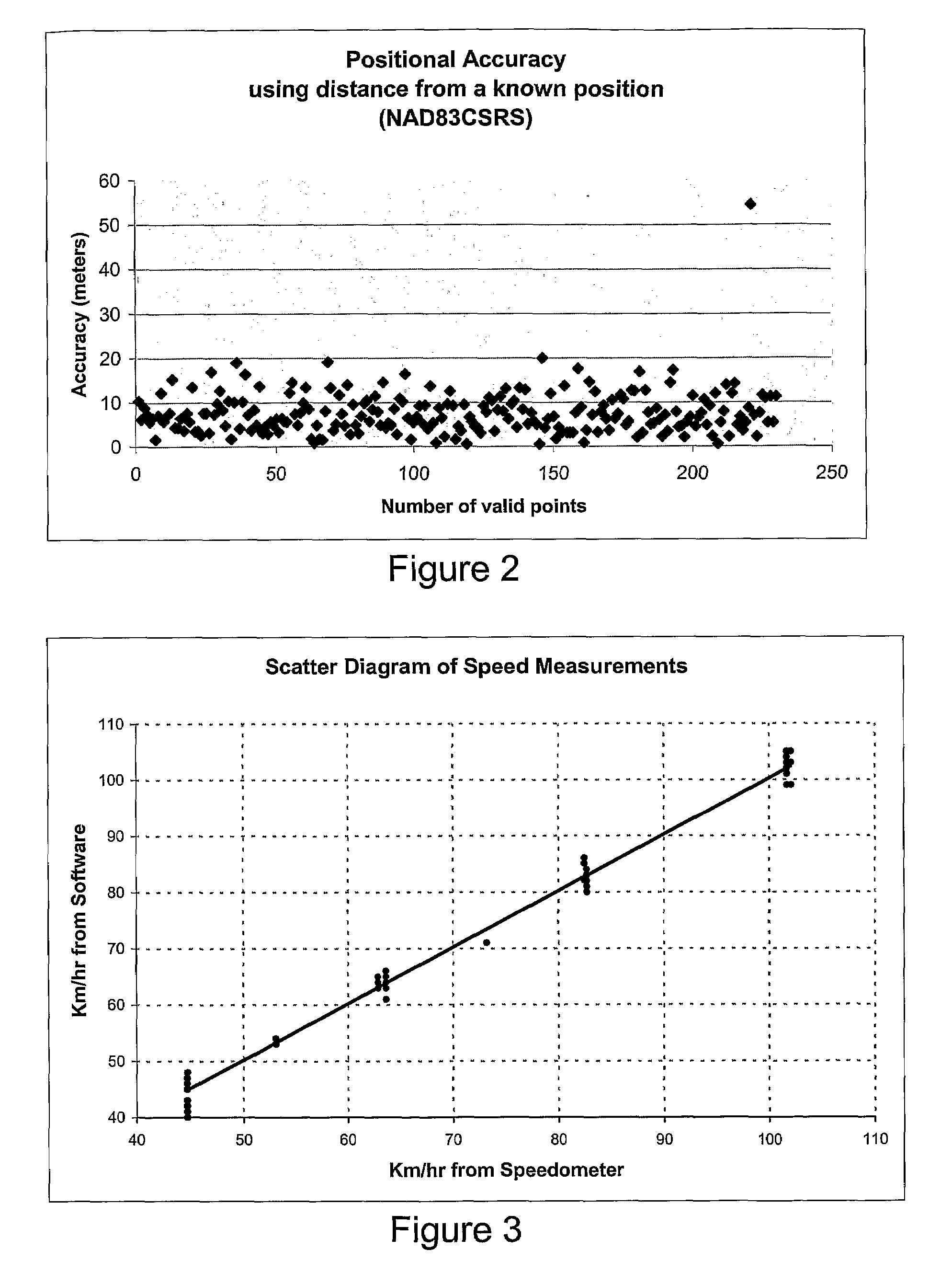System for using cellular phones as traffic probes
a technology of traffic probes and cellular phones, applied in transmission systems, traffic control systems, analog and hybrid computing, etc., can solve problems such as inability to accurately choose routes, inaccurate information, and inability to accurately select routes for drivers
- Summary
- Abstract
- Description
- Claims
- Application Information
AI Technical Summary
Benefits of technology
Problems solved by technology
Method used
Image
Examples
Embodiment Construction
[0028]Generally, the present invention provides a method and system for monitoring and managing traffic flow and congestion using GPS enabled or Assisted-GPS enabled cellular phones as traffic probes. A-GPS enabled cellular phones are used throughout the following description, but one skilled in the art will appreciate that GPS enabled cellular phones could also be used without departing from the scope of the present invention. A-GPS is a presently preferred embodiment due to its wider deployment than GPS enabled phones As discussed above, to obviate the need for expensive infrastructure based traffic flow monitoring systems, probes can be deployed into the traffic flow and then monitored. This allows for resizing zones where appropriate, and if the data is timely, complete and accurate allows for data to be presented to drivers to assist in the selection of proper routes.
[0029]To obtain accurate and complete data using traffic probes, it is advantageous to make use of a large numbe...
PUM
 Login to View More
Login to View More Abstract
Description
Claims
Application Information
 Login to View More
Login to View More - R&D
- Intellectual Property
- Life Sciences
- Materials
- Tech Scout
- Unparalleled Data Quality
- Higher Quality Content
- 60% Fewer Hallucinations
Browse by: Latest US Patents, China's latest patents, Technical Efficacy Thesaurus, Application Domain, Technology Topic, Popular Technical Reports.
© 2025 PatSnap. All rights reserved.Legal|Privacy policy|Modern Slavery Act Transparency Statement|Sitemap|About US| Contact US: help@patsnap.com



